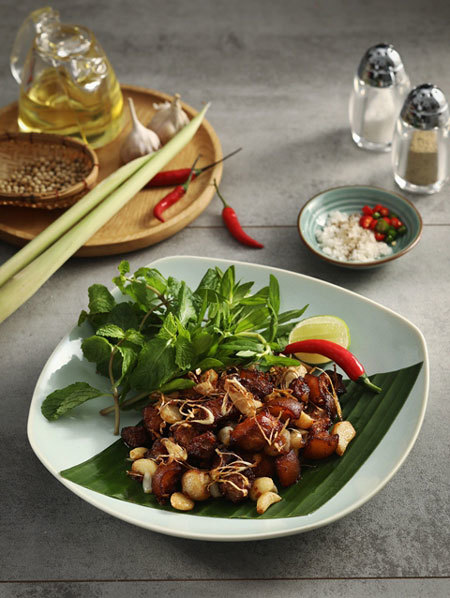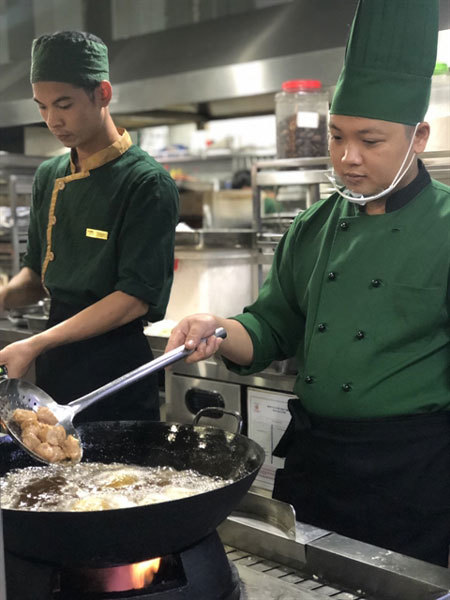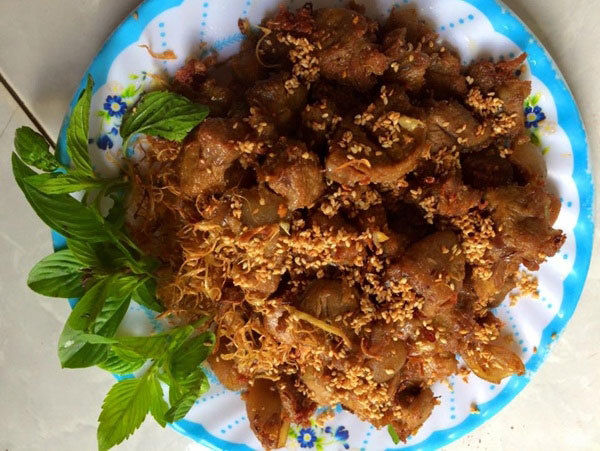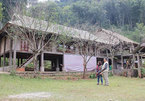Located in the northwestern mountain province of Son La, about 185km from Hanoi, Moc Chau is said to be Vietnam’s cattle breeding region.
A visit to Ang village and Doi cave in Moc Chau, Son La
Wild vegetable specialties in the northwest region
 |
Local woman Thai Thi Ban from the Mong ethnic group said her cattle farm provided meat for restaurants in Moc Chau to cook pan-seared veal.
Ban said the restaurant often orders calves that are just one-week old and have been hand-fed on corn to give them a fragrant, sweet meat which remains tender yet crisp after cooking.
“The calves are full of nutrition, which is good for children and the elderly,” Ban said.
Restaurant owner Nong Thi Vuong said she chose the healthiest calves and cubes the meat before marinating it in a special mix.
 |
Vuong said the process was very important to ensure the flavour of the dish. The ingredients for the dish to serve two include 300g of meat, chopped lemongrass, ginger, garlic, red chili, fermented soybean paste, rice vinegar, coriander, sugar, pepper, fish sauce, cooking oil and seasoning.
She said after the marinating for an hour, the meat should be fried until yellow and then combined with lemon leaves to add to the flavour.
Vuong warned, however, that meat should be constantly turned during cooking to ensure it did not get too tough or oily.
 |
She revealed the recipe to make a tasty sauce for the dish. Mix fried garlic with the lemongrass, chilli, water, rice vinegar, fermented soybean paste and sugar, and then simmer for five minutes.
“Lots of travellers visit Moc Chau during autumn, and most of them order the dish,” Vuong said, adding she had heard customers urging fellow diners to try the dish.
Vuong’s restaurant also serves bê xào lăn (stir- fried veal), bê hấp sả (steamed veal with citronella) and bê tái chanh (veal salad with lemon).
There are many eateries serving the dish along Highway 6 running through Moc Chau, but Vuong suggested trying out 64 and 70 Moc Chau, 181 Xuan Bac, and Dong Hai.
Those do not have a chance to travel to Moc Chau should visit Ngon Garden Restaurant in Hanoi to enjoy the dish.
Restaurant owner Pham Bich Hanh said the meat was delivered to her restaurant very early in the morning.
“Our chefs have travelled to Moc Chau to learn the cooking technique. They learnt that the meat should be fried over a large flame to ensure it is well cooked but without burning the ginger and lemongrass,” Hanh said.
Chef Nguyen Van Hai said: “The dish should be eaten hot to enjoy it at its best,” noting that he served hundreds of diners a day.
Hoang Thuy Van, a banker from PVComBank in Hanoi, said she had become an addict of bê chao Moc Chau since her trip to the area last year.
“During my five-day trip to Moc Chau, my choice was always bê chao. I wan't sure where to find the dish in Hanoi. Fortunately, my friend introduced me to Ngon Garden Restaurant where I enjoy the dish twice a week with my family,” Van said, adding that her children and parents also like the dish because it’s soft and sweet.
The restaurant also offers a delivery service.
Unfortunately for Van, the service doesn't stretch as far as HCM City or Da Nang while she's away on business. VNS
Ha Nguyen & Ho Hoang

Building a respectful homestay culture: Both host and guest hold responsibility
Over recent years, Vietnamese tourism has been booming. As travellers relish their freedom and more and more types of services and accommodations are created, homestays still stand out as one of the most popular for their simple and cosy beauty.
 Moc Chau is most famous for its beautiful landscapes and fresh milk, but delicacies such as be chao (pan-seared veal) have also helped spread the word about food in the area far and wide.
Moc Chau is most famous for its beautiful landscapes and fresh milk, but delicacies such as be chao (pan-seared veal) have also helped spread the word about food in the area far and wide.